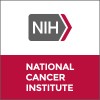
Treatment and Natural History Study of Lymphomatoid Granulomatosis
Lymphomatoid GranulomatosisGranulomatosis3 moreThis study will evaluate the response and long-term effects of alpha-interferon in patients with lymphomatoid granulomatosis (LYG). The disease causes proliferation of destructive cells involving the lungs, skin, kidneys, and central nervous system. Patients ages 12 and older who have LYG and who are not pregnant or breast feeding may be eligible for this study. Alpha interferon or chemotherapy, or both, will be used. Alpha interferon is a protein the body naturally produces. If patients have grade 3 disease, they will usually receive EPOCH-rituximab (EPOCH-R) chemotherapy (each letter representing a drug). If patients have grade 1 or 2 disease, the will usually receive alpha interferon. If patients have LYG after receiving alpha interferon and/or EPOCH-R, they may receive rituximab alone or with alpha interferon. Rituximab is an antibody, binding to a specific molecule (CD20) present on most B-cell lymphomas. Doses of several drugs in EPOCH-R may be increased if patients tolerated them in the previous cycle. If patients respond to EPOCH-R but still have low grade LYG, they may receive alpha interferon. Researchers will also try to obtain a biopsy of patients lesions, to help in understanding the disease. Patients self-administer alpha interferon by injection under the skin three times weekly. They will visit the clinic every 2 to 12 weeks for follow-up. Patients will receive alpha interferon for 1 year after LYG goes away, depending on response. EPOCH-R has these drugs: rituximab by vein on Day 1; prednisone by mouth on Days 1 to 5; etoposide, doxorubicin, and vincristine as a continuous intravenous infusion on Days 1 to 5; and cyclophosphamide by intravenous injection over 1 hour on Day 5. Each cycle lasts 3 weeks: 5 days of chemotherapy and 16 days of no chemotherapy. Etoposide, doxorubicin, and vincristine are infused through a small pump worn by patients. The drugs are given over 5 days through a central intravenous catheter. There are two cycles of EPOCH-R beyond a maximum response, with six cycles minimum. To reduce harm to bone marrow, patients receive granulocyte colony stimulating factor (G-CSF), self-administered by injection under the skin daily for approximately 10 days between chemotherapy cycles. If at the end of therapy, patients have a complete response, treatment will stop. If there is residual low grade disease, patients may receive alpha interferon. Alpha interferon can have flu-like side effects of headache, fever, chills, and body aches. EPOCH-R drugs can cause gastrointestinal problems, hair loss, and weakness. G-CSF can cause bone pain, body aches, and hair thinning. Chemotherapy can cause some patients to develop leukemia. This study may or may not have a direct benefit for participants. It is not certain whether the new therapy will help decrease tumors. However, knowledge gained may improve the understanding of and treatment for LYG.

Administration of Autologous T-Cells Genetically Engineered to Express T-Cell Receptors Reactive...
Endocrine TumorsNon-Small Cell Lung Cancer5 moreBackground: A person s tumor is studied for mutations. When cells are found that can attack the mutation in a person s tumor, the genes from those cells are studied to find the parts that make the attack possible. White blood cells are then taken from the person s body, and the gene transfer occurs in a laboratory. A type of virus is used to transfer the genes that make those white blood cells able to attack the mutation in the tumor. The gene transfer therapy is the return of those white blood cells back to the person. Objective: To see if gene transfer therapy of white blood cells can shrink tumors. Eligibility: People with certain metastatic cancer for which standard treatments have not worked. Design: Participants may complete screening under another protocol. Screening includes: Getting tumor cells from a previous procedure Medical history Physical exam Scans Blood, urine, heart, and lung tests The study has 8 stages: Screening tests repeated over 1-2 weeks. Participants will have leukapheresis: Blood is removed by a needle in one arm. A machine removes white blood cells. The rest of the blood is returned by a needle in the other arm. Care at home over approximately 12 weeks. Stopping therapy for 4-6 weeks while their cells are changed in a lab. Hospital stay approximately 3-4 weeks for treatment. An IV catheter will be placed in the chest to administer drugs. Patients on Arm 2 of the study will receive the first dose of pembrolizumab while in the hospital. Three additional doses will be given after the cell infusion 3 weeks apart. Receiving changed cells by catheter. Then getting a drug over 1-5 days to help the cells live longer. Recover in the hospital for 1-2 weeks. Participants will get drugs and have blood and urine tests. Participants will take an antibiotic and maybe an antiviral for at least 6 months after treatment. They will have repeat screening tests at visits every few months for the first year, every 6 months for the second year, then as determined.

A Study of CA-4948 in Patients With Relapsed or Refractory Primary Central Nervous System Lymphoma...
Relapsed Hematologic MalignancyRefractory Hematologic Malignancy2 moreThis is a multi-center, open-label trial to evaluate the safety, pharmacokinetics (PK), and anti-cancer activity of oral administration of emavusertib (CA-4948) in adult patients with relapsed or refractory (R/R) hematologic malignancies. Part A will evaluate the safety and tolerability of escalating doses of emavusertib as monotherapy (Part A1), and in combination with ibrutinib. In Protocol Version (v) 1.0 through v6.0, patients with Waldenström macroglobulinemia/ lymphoplasmacytic lymphoma (WM/LPL) and chronic lymphocytic leukemia (CLL)/small lymphocytic lymphoma (SLL) were also enrolled at ibrutinib doses of 420 mg (Part A2). Enrollment into Parts A1 and A2 has been closed. Part B will comprise 2 cohorts to assess safety and efficacy of emavusertib in combination with ibrutinib in patients with primary central nervous system lymphoma (PCNSL).

Rivaroxaban or Aspirin As Thromboprophylaxis in Multiple Myeloma
Multiple Myeloma in RelapseMultiple Myeloma Progression4 moreThe intended study is designed as a a phase IV pragmatic multicenter randomized controlled clinical trial, comparing the impact of two different therapies including ASA vs. Rivaroxaban in newly diagnosed or relapsed and refractory multiple myeloma patients treated with Lenalidomide Dexamethasone (Len-Dex) combination therapy. The pilot feasibility study was conducted in preparation for this randomized controlled trial designed to assess the effect of an intervention.

ASCT With Nivolumab in Patients With Multiple Myeloma
Multiple MyelomaThis is an open-label, single center trial of Autologous Stem Cell Transplantation (ASCT) with nivolumab in multiple myeloma patients to determine the efficacy and safety of ASCT and PD1 inhibitor combination. For this purpose, 30 multiple myeloma patients, who have received induction therapy and have achieved a partial response (PR), stable disease (SD) or progression, and thus have unfavorable prognosis, will be treated with nivolumab administered iv at a dose of 100 mg on days 3 before and 17 after high-dose melphalan with autologous stem cell transplantation.

Biomarker Driven Intensified ChemoImmunotherapy With Early CNS Prophylaxis
LymphomaLarge B-Cell1 moreThis study is testing whether stratification of the patients according to biological risk factors for different treatment groups will improve the outcome of patients with clinically high diffuse large B-cell lymphoma (DLBCL).

CAR-T Cells Combined With Peptide Specific Dendritic Cell in Relapsed/Refractory Leukemia/MDS
LeukemiaAcute Lymphocytic (ALL)3 moreThe main purpose of this study is to verify the safety and potential effectiveness of CART cells combined with peptide specific dendritic cell in relapsed/refractory leukemia.

Treatment With the Anti-IgE Monoclonal Antibody Omalizumab in Women With Asthma Undergoing Fertility...
AsthmaInfertility1 moreThe investigators have previously confirmed a clinical hunch that women with asthma have difficulties in becoming pregnant. The investigators found increased time to pregnancy (TTP) in women with asthma compared to non-asthmatic women (55 vs 33 months, p<0.001), furthermore, women with asthma had less successful pregnancies following fertility treatment (39.6 vs 60.4%, p=0.002). Treatment with omalizumab stabilizes the eosinophilic disease, through the systemic and most likely the anti-inflammatory pathways, which indicate a promising possibility to increase pregnancy rate. In a small real-life study in 2017, 5 patients with eosinophilic asthma who underwent in vitro fertilization (IVF), were treated with omalizumab prior to embryo transplantation; three out of the five women became pregnant. Lastly, the two remaining patients had several treatments with omalizumab, but did not become pregnant. This real-life study calls for further investigation. By targeting systemic inflammation with omalizumab treatment the aim is to increase asthma control before and during pregnancy. A treatment strategy aiming at improving overall inflammatory control may increase fertility, but also reduce well known maternal and perinatal adverse pregnancy outcomes such as pregnancy loss, preeclampsia, gestational diabetes, low-birth weight, small for gestational age (SGA), preterm delivery. Study design: A randomized control trial with omalizumab and placebo, stratified for blood eosinophil count, is therefore needed. A randomized, double blinded, parallel group, study to evaluate the difference between omalizumab (O) and placebo (P) on pregnancy rate in patients with atopic asthma.Treatment schedule: After collection of material (blood samples, sputum, secretion of the vagina, secretion of the rectum, microbiota) 6th day (±1 day) of the menstrual cycle, the patients will be randomized in either the omalizumab group or the placebo group. No collection of material will be done at the time of enrollment, as this will be on different time of the female cycles. The treatment is initiated with one injection with weight and serum-immunglobulin E balanced omalizumab or one injection placebo. After omalizumab treatment at ovulation it will again be collected material (blood samples, sputum, secretion of the vagina, secretion of the rectum, secretion of the uterus, microbiota). If no pregnancy has occurred after first IVF cycle, this will be repeated for 3 consecutive IVF cycles in total or until pregnancy has occurred. Outcome: The primary out-come is efficacy of omalizumab, compared to placebo, in increasing pregnancy rate in females with asthma. Secondary out-comes are changes in the inflammation in lungs/systemic/uterus, change in microbiota in the uterus and lungs, pregnancy loss, asthma control and biomarkers in the blood/lungs/uterus.

A Study to Evaluate the Pharmacokinetics, Safety, and Tolerability of Upadacitinib in Pediatric...
Juvenile Idiopathic Arthritis (JIA)This is a study to evaluate pharmacokinetics, safety and tolerability of upadacitinib in pediatric participants with polyarticular course juvenile idiopathic arthritis. This study consists of three parts: Part 1 is multiple-cohort study that consists of two sequential multiple dose groups. Participants benefiting from the study drug with no ongoing adverse events of special interest or serious adverse events will have option to enroll in Part 2. Part 2 is open-label, long term extension study to evaluate safety and tolerability. Part 3 is an additional safety cohort to evaluate long-term safety and tolerability.

CS1-CAR T Therapy Following Chemotherapy in Treating Patients With Relapsed or Refractory CS1 Positive...
Recurrent Plasma Cell MyelomaRefractory Plasma Cell MyelomaThis phase I trial studies the side effects and best dose of CS1-chimeric antigen receptor (CAR) T therapy after chemotherapy in treating patients who have CS1 positive multiple myeloma that has come back (relapsed) or does not respond to treatment (refractory). Immune cells can be engineered to kill multiple myeloma cells by inserting a piece of deoxyribonucleic acid (DNA) into the immune cells using a lentiviral vector such as CS1, that allows them to recognize multiple myeloma cells. These engineered immune cells, CS1-CAR T cells, may kill multiple myeloma cells.
